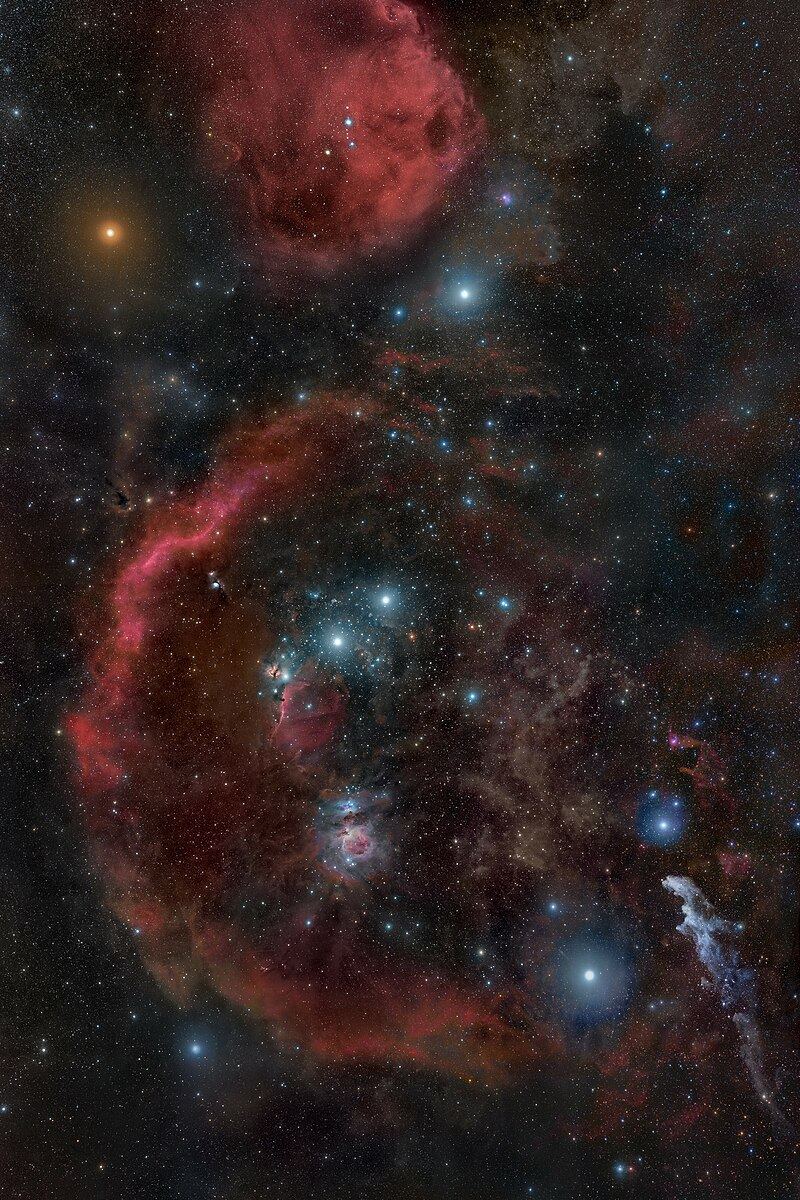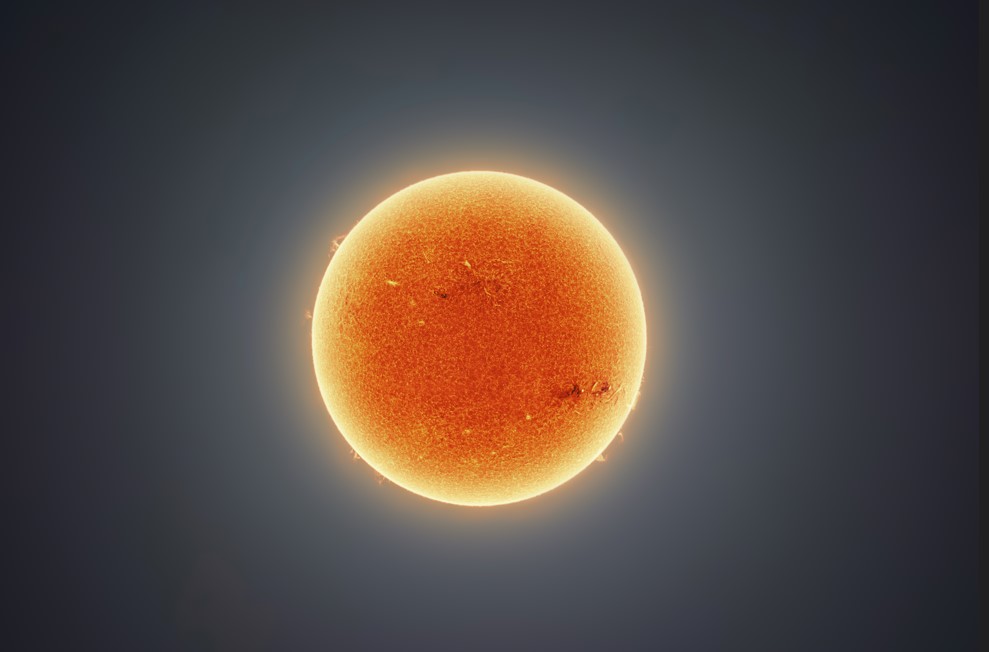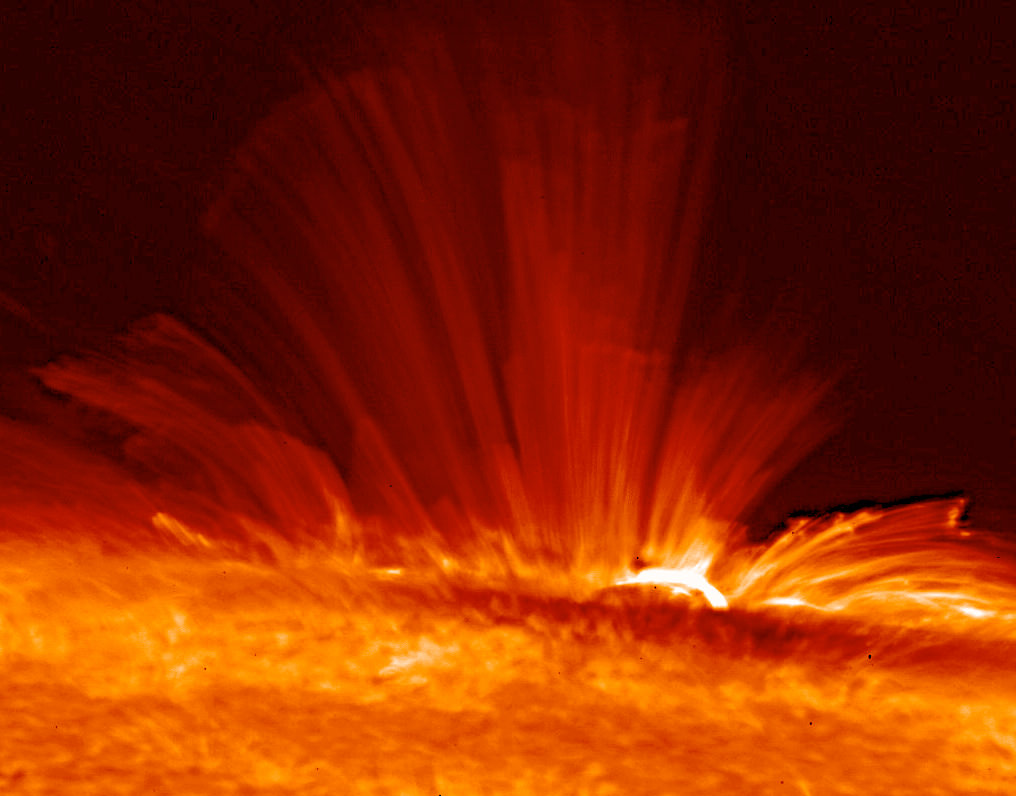[/caption]
The Sun may look like just a mass of incandescent gas (plasma, really), but it’s actually broken up into layers. The chromosphere is relatively thin region of the Sun that’s just above the photosphere.
The photosphere is the region of the Sun that we see. It measures an average temperature of almost 5,800 kelvin and produces the visible radiation. This is the point where photons generated inside the Sun can finally leap out into space. The chromosphere measures just 2,000 km, and it’s just outside the photosphere.
Even though it’s very thin, the chromosphere changes dramatically in density, from the top down to the photosphere, the density of the chromosphere increases by a factor of 5 million. The upper boundary of the chromosphere is the called the solar transition region, above which is known as the corona.
One surprising mystery is that the chromosphere is actually hotter than the photosphere. While the photosphere hovers around 5,800 kelvin, the temperature of the chromosphere varies between 4,500 K and 20,000 K. Even though it’s more distant from the center of the Sun, the chromosphere is hotter than the photosphere. Astronomers think turbulence in the Sun’s atmosphere might somehow cause this extra heating.
The chromosphere is difficult to see without special equipment because the light from the much brighter photosphere washes it out. It has a reddish color, but you can only really see it during a total solar eclipse.
One of the recognizable features of the chromosphere are spicules. These are fingers of gas that kind of look like grass growing on the surface of the Sun. These can rise up in the chromosphere and then disappear again within 10 minutes.
We’ve written several episodes about the Sun for Universe Today. Here’s an article about the Sun’s atmosphere, and here’s an article about how solar astronomers are getting better at predicting the solar wind.
If you’d like more info on the Sun, check out NASA’s Solar System Exploration Guide on the Sun, and here’s a link to the SOHO mission homepage, which has the latest images from the Sun.
We’ve also recorded an episode of Astronomy Cast just about the Sun. Listen here, Episode 30: The Sun, Spots and All.





